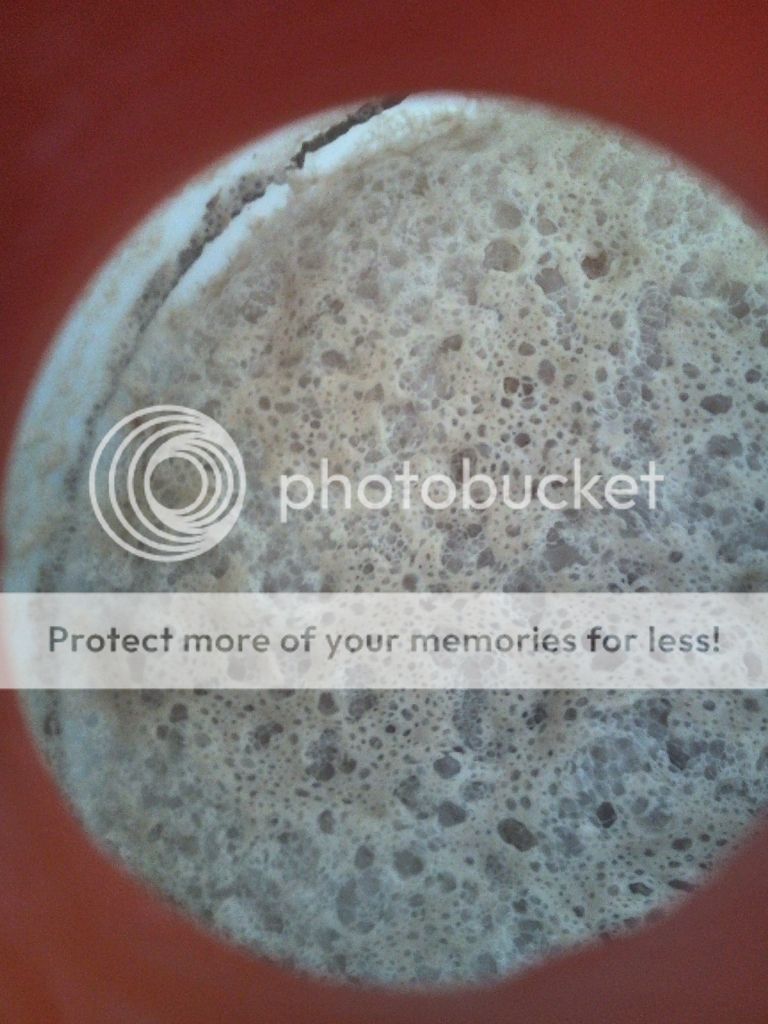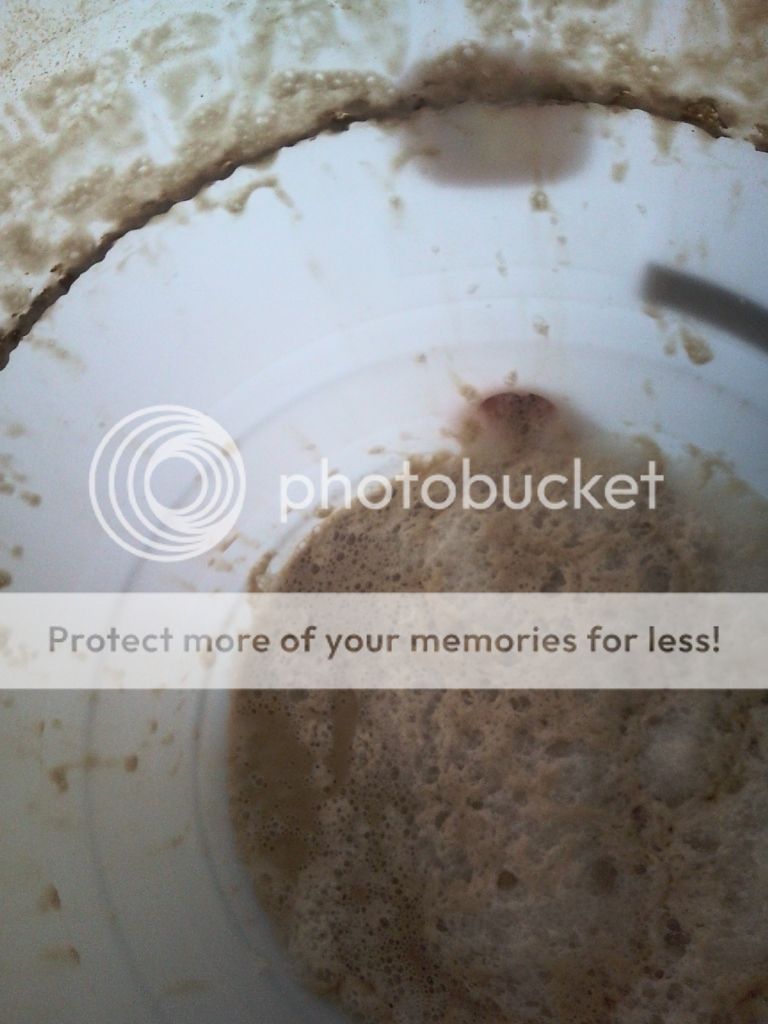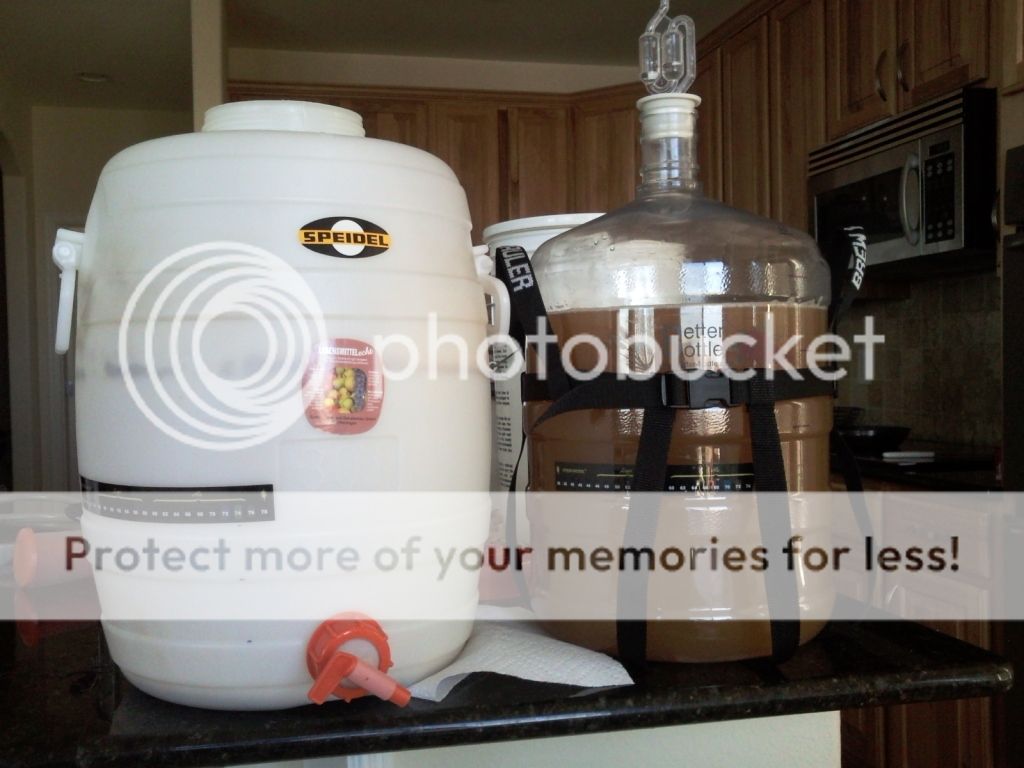Long time reader, first time poster with beginner knowledge level.
This is my second ale, so I am not sure why I still had thick krausen in primary after fermentation was over.
I brewed belgian ale trappist style last weekend, all-grain with WYEAST #3787 TRAPPIST HIGH GRAVITY with 1.1 liter starter, crash cooled, decanted, then pitched at 65F.
Primary fermentation completed in 7 days at 68F.
I hit all the numbers per recipe: OG 1.051, FG 1.012.
When I was racking into secondary I noticed that there was still a quite thick krausen on top of beer, which I did not see during fermentation due to using opaque fermenting tank by Spiedel.
After I racked beer from under krausen through a lower spigot, there was a healthy looking yeast cake on the bottom. The fermenter/krausen/yeast cake smelled a bit nasty with sweet fruits, which seems to fit this yeast profile. However during fermentation the airlock smelled heavenly with fruity beer.
I set secondary into a 46F fridge to clear for the next 3 weeks.
Beer in a secondary looks a bit muddy and tastes well attenuated and absolutely correct for pilsner grain with saaz hops.
1. Does this look normal for this yeast?
2. If this was indeed an infection, should I still chill secondary for 3 weeks and then taste it? If it tastes good then, should I go ahead and bottle it?
Here are the pictures

After draining beer, you can see some yeast cake on the bottom:

Beer looks good in secondary (BB):

This is my second ale, so I am not sure why I still had thick krausen in primary after fermentation was over.
I brewed belgian ale trappist style last weekend, all-grain with WYEAST #3787 TRAPPIST HIGH GRAVITY with 1.1 liter starter, crash cooled, decanted, then pitched at 65F.
Primary fermentation completed in 7 days at 68F.
I hit all the numbers per recipe: OG 1.051, FG 1.012.
When I was racking into secondary I noticed that there was still a quite thick krausen on top of beer, which I did not see during fermentation due to using opaque fermenting tank by Spiedel.
After I racked beer from under krausen through a lower spigot, there was a healthy looking yeast cake on the bottom. The fermenter/krausen/yeast cake smelled a bit nasty with sweet fruits, which seems to fit this yeast profile. However during fermentation the airlock smelled heavenly with fruity beer.
I set secondary into a 46F fridge to clear for the next 3 weeks.
Beer in a secondary looks a bit muddy and tastes well attenuated and absolutely correct for pilsner grain with saaz hops.
1. Does this look normal for this yeast?
2. If this was indeed an infection, should I still chill secondary for 3 weeks and then taste it? If it tastes good then, should I go ahead and bottle it?
Here are the pictures

After draining beer, you can see some yeast cake on the bottom:

Beer looks good in secondary (BB):




